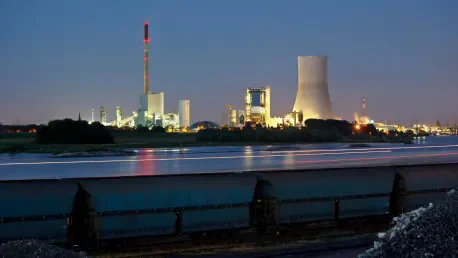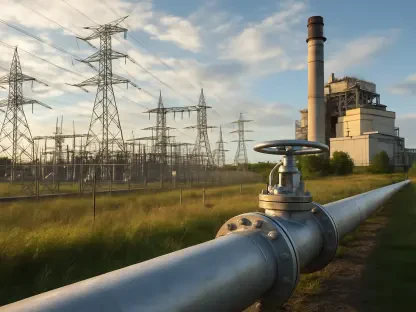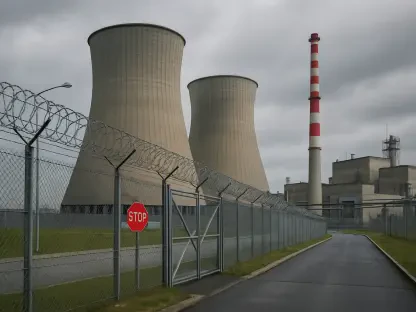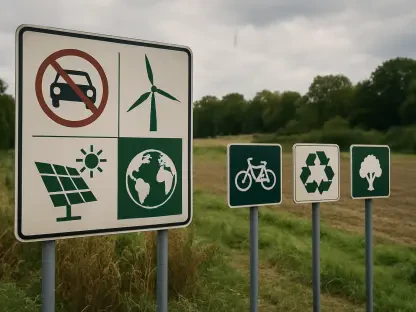Puerto Rico stands at a pivotal moment as it endeavors to transition its energy system, aiming for 100% renewable energy by 2050. The island’s energy infrastructure, still recovering from the significant damage caused by Hurricane Maria in 2017, requires robust enhancements to ensure stability and reliability. In this context, GE Vernova’s recent contract to provide six LM2500XPRESS aeroderivative gas turbines to RG Engineering is a critical step forward. These turbines are integral to modernizing power plants in strategic locations: Daguao, Jobos, and Yabucoa. Their deployment provides not only a much-needed increase in grid reliability but also a crucial 244 MW of peaking capacity to manage high demand and emergencies effectively. As Puerto Rico increasingly turns to renewable resources like solar power, GE’s advanced turbines will play a vital role in providing a stable and dependable supply of electricity, supplementing intermittent renewable sources.
Enhancing Grid Resilience
Fast-Starting Technology for Immediate Needs
GE’s LM2500XPRESS aeroderivative gas turbines are a game-changer for Puerto Rico’s electric grid due to their quick-start capabilities, which can swiftly meet peak demand and stabilize the grid when renewable sources like solar aren’t producing. This is especially vital as the island sees rapid growth in solar installations, averaging around 4,000 new systems each month. However, despite this growth, Puerto Rico’s residents suffer from significant grid vulnerabilities, facing an average of seven hours of outages per customer each year. GE’s turbines are crucial in bridging the gap between renewable growth and grid reliability, ensuring a seamless transition toward sustainable energy. Their ability to quickly ramp up energy production provides a reliable backup that complements the intermittent nature of solar and other renewable energies. With these turbines, Puerto Rico can better handle sudden spikes in energy demand, thereby minimizing disruptions and enhancing overall grid stability.
Balancing Renewables and Grid Stability
Puerto Rico’s commitment to expanding its renewable energy capacity is met with significant challenges, including regulatory uncertainties that could impede progress. The potential elimination of net metering programs could severely impact small-scale solar project growth, diminishing energy equity and community resilience. As the island integrates more distributed energy resources, enhancing grid visibility and control becomes paramount. GE stands at the forefront of addressing these challenges, providing advanced technological solutions such as virtualized protection systems and AI-driven management tools designed to optimize grid performance. While these technologies promise to enhance control and reliability, their implementation on the island remains forthcoming. Implementing these digital solutions on a broad scale will be crucial in navigating the complexities of a diversified energy mix. They represent GE’s commitment to not only installing physical infrastructure but also integrating smart technologies that enhance operational efficiency and resilience.
The Broader Market Context
Investment Implications and Market Position
GE’s strategy of deploying gas turbines in Puerto Rico is emblematic of its broader positioning within the global grid solutions market, which exceeds $10 billion. This investment underscores the increasing need for hybrid systems that effectively combine renewable sources with reliable gas turbines to create a resilient energy infrastructure. Although the specific deal with Puerto Rico may seem modest compared to GE’s extensive market activities, it signifies a shifting industry paradigm where companies are leaning towards creating more versatile and adaptable energy systems. For investors, this move places GE in a strategic position during a crucial period of transition in the energy market. However, there are inherent risks involved, such as potential regulatory hurdles and fierce competition from other players like Siemens Energy and Voltus. Despite these, GE’s legacy in power generation combined with its growth in digital technologies gives it a competitive edge as it navigates the evolving landscape of energy systems.
Competitive Edge Through Digital Innovation
GE’s commitment to enhancing grid resilience is supported by its significant investments in digital innovations. With a keen focus on blending traditional power generation expertise with cutting-edge technology, GE has positioned itself as a leader in creating hybrid energy solutions. These hybrid systems provide a harmonious blend of renewable energy sources and reliable conventional power solutions, poised to cater to a global demand for more sustainable yet stable energy systems. GE’s advanced management tools and virtualized systems offer significant enhancements in grid management and oversight. This technological edge allows GE not only to meet current demands but also to anticipate and prepare for future energy needs. For those considering investments in energy transitions, GE’s increasingly digital approach offers the potential for significant returns as the world gravitates towards more sustainable energy solutions.
Future Considerations for Puerto Rico’s Energy Path
Long-Term Implications and Strategic Developments
GE Vernova’s venture into Puerto Rico through turbine deployment is far more than a mere business transaction; it represents a long-term commitment to the island’s energy future. By taking a dual approach that involves both physical infrastructure and digital innovation, GE is addressing Puerto Rico’s immediate energy needs while laying the groundwork for a more resilient and adaptable grid. For Puerto Rico, the future involves strategic collaborations that leverage technological advancements to meet the complex challenges posed by renewable energy integration and climate considerations. Policymakers and energy stakeholders must work closely with innovators like GE to create regulatory environments that foster growth and sustainability. Such foresight will be essential to ensuring that Puerto Rico not only reaches its renewable energy goals but also maintains a robust and reliable grid system.
A Vision for Sustainable Energy Advancement
Puerto Rico is committed to increasing its renewable energy capacity, yet it faces significant hurdles, primarily due to regulatory uncertainties that could slow down progress. One major issue is the potential elimination of net metering programs, which could drastically affect the growth of small-scale solar projects. This change risks reducing energy equity and weakening community resilience. As the island adds more distributed energy resources, the need for improved grid visibility and control becomes crucial. GE is leading efforts to tackle these challenges by offering cutting-edge technology solutions, like virtualized protection systems and AI-driven management tools, aimed at optimizing grid performance. While these solutions hold the promise of better control and reliability, their widespread adoption is still pending. Deploying these digital solutions extensively will be essential for managing the complexities of a varied energy mix. This approach underscores GE’s dedication to not only building physical infrastructure but also incorporating smart technologies that boost operational efficiency and resilience.









